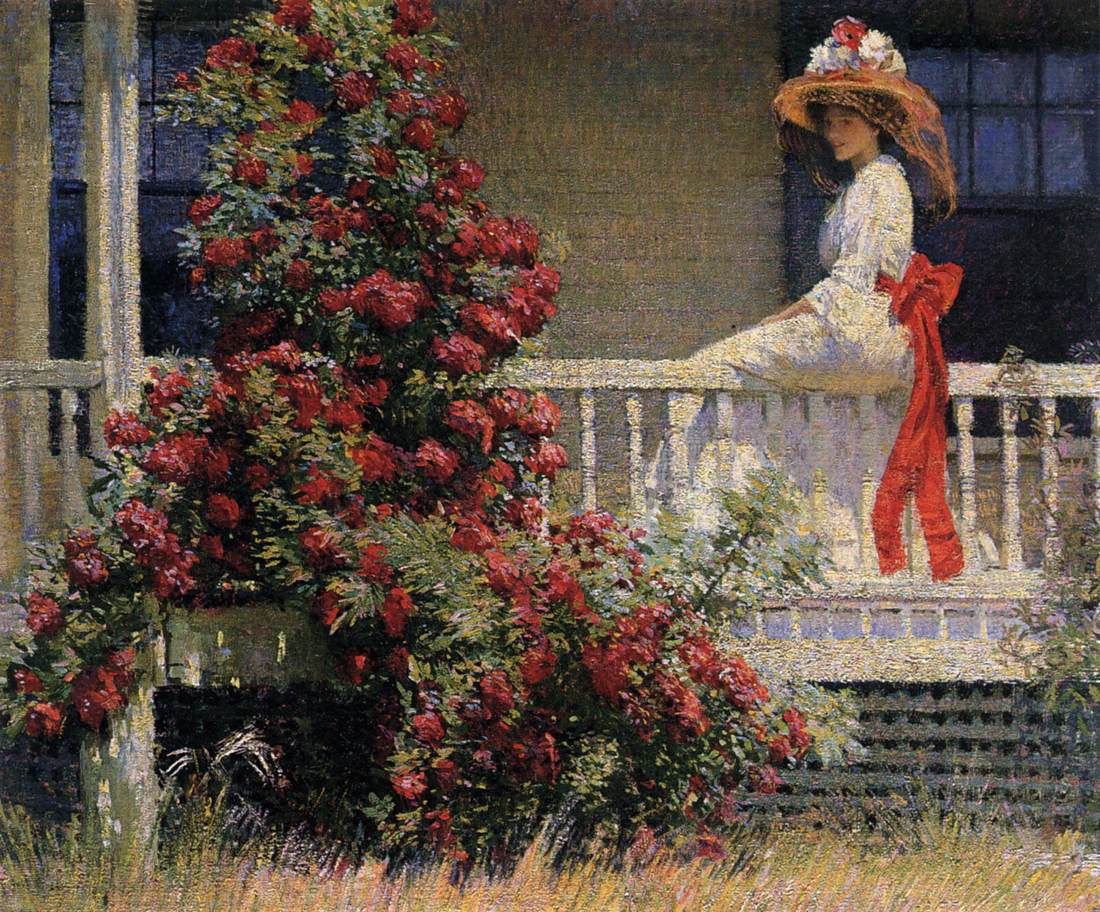American painter. One of the leaders of the Boston School, Hale was an influential art teacher, writer and critic. He wrote a book about Johannes Vermeer in 1913 and advocated the artist's style. He served as an art critic for the Boston Herald from 1905 to 1909, and for the Boston Evening Transcript.
Born into an old and distinguished Boston family, Philip Leslie Hale was active as a writer and teacher as well as painter and print-maker. Hale's father was the respected clergyman, writer, and social reformer Edward Everett Hale, and both his aunt, Susan Hale (1833-1910), and his older sister, Ellen Day Hale (1854-1939), were painters who encouraged his artistic interests. Hale was allowed to study art only after he had passed the Harvard University entrance examination. He studied at the Boston Museum school in 1883 and then at the Art Students League in New York City, where his teachers included painters J. Alden Weir and Kenyon Cox (1856-1919). Hale traveled to Paris in 1887 and enrolled in the academic programs at the private Académie Julian and the official Ecole des Beaux-Arts; in Paris he also began his career as a writer on art.
He visited Spain to see the works of Velázquez before returning to New York. After exhibiting his work in Boston (at the Art Club), Philadelphia (Pennsylvania Academy), New York (Society of American Artists, National Academy of Design), and Chicago (Art Institute), Hale went again to France in the fall of 1890. In 1891 he traveled to England and the following year settled in Boston, becoming an instructor of antique drawing at the Museum School in 1893. About the same time, he began to spend his summers in Giverny (France), with his friend Theodore Butler, Monet's son-in-law, and began a demanding exhibition schedule that he would maintain throughout his career.
Between 1888 and 1892, Hale spent almost every summer in the artists' colony in Giverny, in rural Normandy. Under the influence of the village's most famous resident, Claude Monet, he adopted the bright light and broken brushwork of Impressionism but eventually developed an individual interpretation in his delicate, ethereal paintings in which figures virtually dissolve in an aura of light. The touch of mystery in Hale's Giverny images suggests the impact of the Symbolist movement, in which ordinary objects are invested with powerful symbolic overtones, and the related technical experiments of the so-called Neo-Impressionist Georges Seurat, who used tiny contrasting strokes of colour to create an effect at once shimmering and strangely static.
Philip Hale's reputation would come to rest more upon his merits as a teacher than upon his own painting. Aside from instruction in antique and life drawing and artistic anatomy at the Museum School (1893-1931), he taught art history classes at Boston University, lectured at the Boston and the Metropolitan museums, gave studio classes at the Pennsylvania Academy (1913-1928), and wrote critical reviews for local papers. In 1913 he published the first American text on Vermeer, a lengthy study on the life and work of an artist much admired by Boston painters. That same year Hale exhibited two pictures in the Armory show. He won many prizes and awards, continuing to show his works nationwide, and served on the jury of the Panama-Pacific Exposition in 1915. He remained an active figure on the Boston art scene throughout the 1920s.
//
![]()

